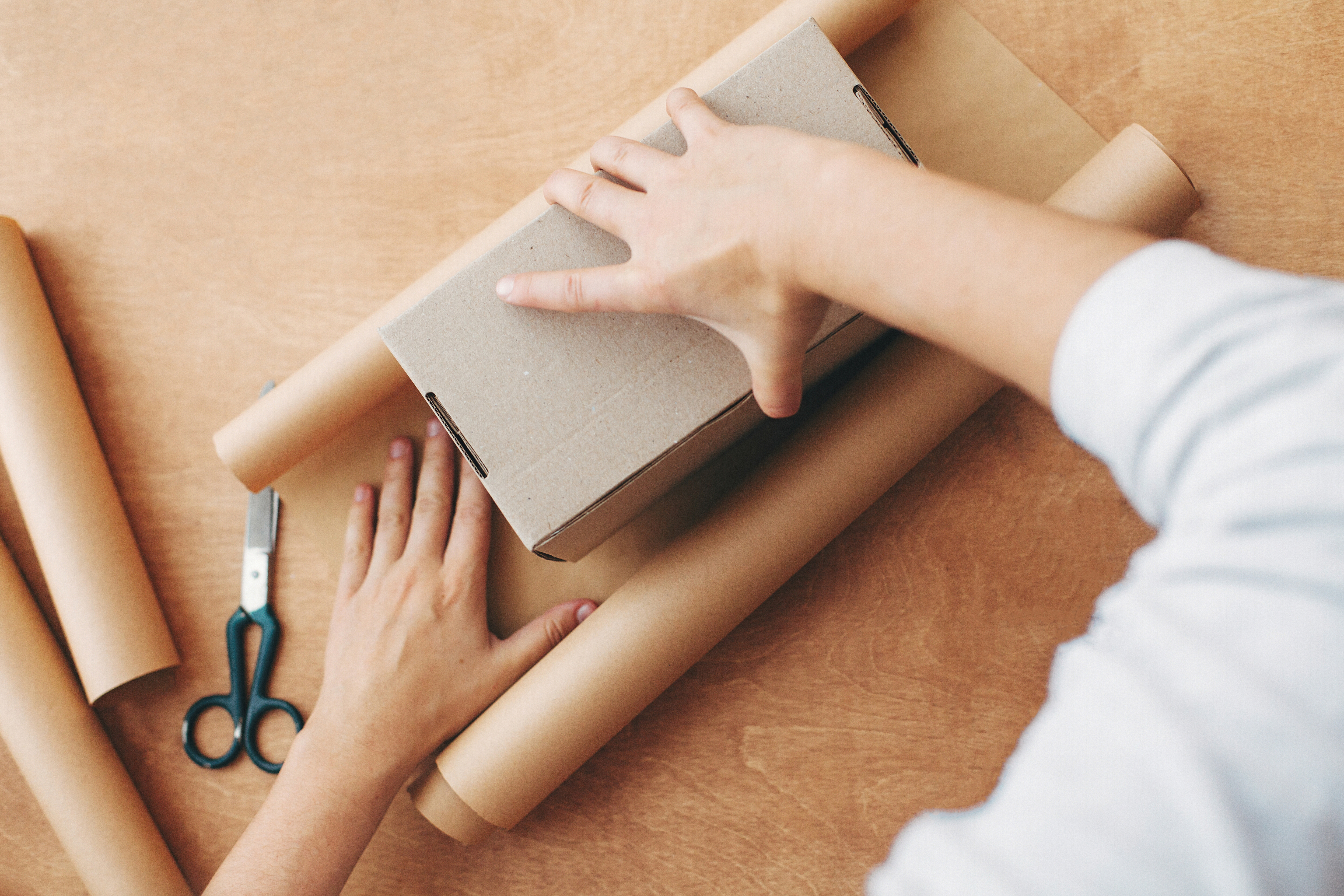Packing paper, the all-rounder for parcels
Don't have a suitable box to hand? No problem - parcels can easily be packed with wrapping paper. With wrapping paper, you always use exactly the amount of packaging you really need. It is a flexible option for packing a wide variety of items - from clothing and books to household goods and electronics.
Used correctly, robust wrapping paper can provide good protection for your products. At the same time, you can reduce packaging waste with this resource-saving material. In this article, you will learn everything you need to know about packaging with wrapping paper.
Inhalt
- Packing with wrapping paper in 5 steps
- Advantages for companies
- Practical tips
- Important questions about wrapping paper
- Is it allowed to wrap parcels with wrapping paper
- Can parcels be packed with wrapping paper?
- Why is wrapping paper more environmentally friendly?
- How can I protect my parcel with wrapping paper?
- How do I fold wrapping paper for different items?
- Can I reuse wrapping paper?
- Can I use wrapping paper for international parcels?
- When is wrapping paper unsuitable?
- Conclusion: wrapping paper is great for parcels
Packing with wrapping paper in 5 steps
Advantages for companies
Practical tips
Buy wrapping paper & accessories
Important questions about wrapping paper
Packing parcels with wrapping paper is generally permitted. However, you should ensure that the packaging meets the necessary safety standards, especially for sensitive or fragile contents.
Our wrapping paper is made from recycled materials and is biodegradable. Compared to plastic packaging, wrapping paper is definitely much more environmentally friendly, but wrapping paper also performs very well compared to other cardboard packaging because it is very flexible and can be used sparingly.
To adequately protect your parcel with packing paper, wrap it carefully, use several layers for fragile items if necessary and seal the packing paper securely with adhesive tape. If necessary, supplement the protection by adding cushioning material.
For rectangular items: Fold the packing paper around the item and secure the edges with adhesive tape. For round or irregularly shaped items, wrap the paper around the item and secure it. Delicate items should first be wrapped in a protective layer and then wrapped in packing paper. Make sure that all edges and corners are well covered. Small items or sets can be grouped together and individually wrapped in wrapping paper before packing.
In most cases, wrapping paper can be reused. As long as it is not badly damaged or soiled, you can reuse it for packing other items. However, please note that for effective reuse, the wrapping paper should not be heavily creased or torn to ensure adequate protection.
You can use wrapping paper for international parcels. However, please observe the customs regulations of the destination country and choose sturdy wrapping paper to ensure safe transport.
Packing parcels with wrapping paper takes practice. If you are in a hurry or have a large number of identical products to pack, prefabricated cardboard packaging is easier to fill. In addition, moist or moisture-sensitive goods should be transported in plastic packaging or coated cardboard.
Conclusion: wrapping paper is great for parcels
Wrapping paper is an excellent choice for packing parcels. It combines effectiveness in protecting the contents with a high degree of environmental friendliness. In addition, the versatile nature of the wrapping paper allows it to be customised for a wide variety of items.
The additional use of environmentally friendly adhesive tape not only reliably secures the contents, but also maximises the contribution to reducing plastic waste. All in all, wrapping paper offers companies a sustainable, cost-efficient and practical solution for the secure packaging of parcels.

